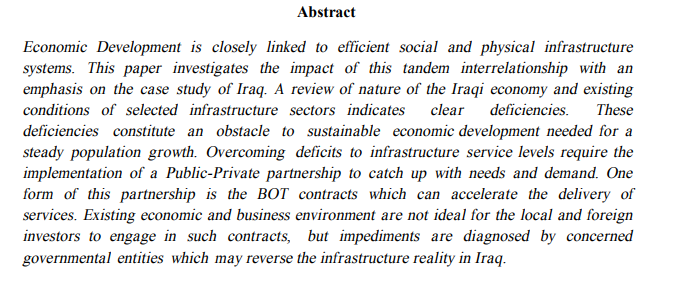In the last years, a new technology called Cloud computing has been developed. Empirical and previous studies, commonly examined in business field and other domains. In this study, the significant factors that affecting the adoption of cloud computing have been examined using a frequency analysis that have been explored by the previous studies. The results showed that the most effected factors were relative advantage which followed by security and privacy, complexity, innovativeness, and external support. In this study the model of technology organization-environment was used to examine the significant factors that affecting the adoption of cloud computing.
The Early – Middle Miocene Ghar and Lower Fars sedimentary succession at the representative oil-well Nu-18 of the Nahr Umr oil field south Iraq; is taken by this study to investigate the sedimentological to reservoir rock facies buildups and related reservoir zonation; as first rock-typing attempt for the both formations. The sedimentological characterization of the Early Miocene Ghar formation is mainly comprised by successive buildups of sands-gravels and sandstones, whereas; the Middle Miocene Lower Fars formation is started by limestone, limestone-marly/marl anhydritic, upgraded into interbedded-series of marl and anhydrite facies, with less-common occurrences of thin-sandstone interlayers, terminated by marl-sandy-secti
... Show MoreSpecimens of the hedgehog Hemiechinus auritus Gmelin. which were trapped in two places on the Eastern shores of the Tigris River, some 50 and 60 Km, south of Baghdad. central Iraq. were searched for ectoparasites. They revealed the following parasites: One species of Anoplura: polyplex spinulosa (Burm.), family Hoplople uridae, two species of fleas: Synostrnus pallidus (Tasch.) and Ctenocephalides felis (Bouche), family pulicidae, One mite species: Ornithonyssus bacoti (Hirst), family Macronyssidae and two tick species: Rhipicephalus leporis and R. turanicum family Ixodidae. All these ectoparasite species are new records on this hedgehog in Iraq.
The title takes its realistic connotations with its symbols, slogans and historical extensions in Iraq, also, the repercussions of the organic crisis that afflicted it for almost half a century, especially after the abortion of the July 14 Revolution and the spread of the culture of weapons, violence and death that we are living in Iraq nowadays.
The topic is suitable for critical analytical studies carried out by specialists in scientific and academic research centers and cultural institutions because they have an important feasibility at the strategic cultural level in Iraq, the Middle East and the world.
Research in Iraq has fallen to the extreme and is no longer effective, to the extent that it represents a severe cri
... Show MoreThe fauna of bees (Hymenoptera, Apoidea) from different regions of Iraq is surveyed in this study; there were 16 species, 13 genera that belong to four families which are collected in this investigation.
Also, all the species that are recorded for Iraq in previous investigations are revised; totally there are 110 species, 32 genera belonging to five families: Apidae, Andernidae, Colletidae, Halictidae and Megachilidae were listed.
 (15)
(15)
 (8)
(8)
A revised checklist of the robber fly genera (Diptera, Asilidae) was given during this study in Iraq. The investigation showed (21) genera belonging to seven subfamilies, two genera new recorded to entomofauna of Iraq (Promachus Loew, 1848 and Genus: Dysmacus Loew, 1860). Eight genera showed in this investigation and eleven genera were recorded previously to Iraq.
 (1)
(1)
 (4)
(4)
This study aimed to conduct a comparative analysis of seven calliphorid species of third- instar larvae that were collected from central Iraq. The purpose was to morphologically characterize these species and develop an identification key to differentiate them from closely related species. Scanning Electron Microscope (SEM) graphical images and high-resolution traditional optical microscopes were used to analyze the morphological characteristics of the species Calliphora vomitoria (Linnaeus, 1758), C. vicina Robineau-Desvoidy, 1830, Chrysomya albiceps (Widemann, 1819), Ch. rufifacies (Macquart, 1844), Ch. megacephala (Fabricius, 1794), Lucilia cuprina (Wiedemann, 1830), and L. sericata (Meigen, 1826). An identification key was const
... Show MoreHTH Ali Tarik Abdulwahid , Ahmed Dheyaa Al-Obaidi , Mustafa Najah Al-Obaidi, eNeurologicalSci, 2023
 (3)
(3)

